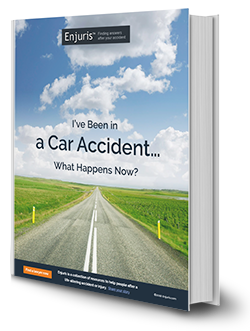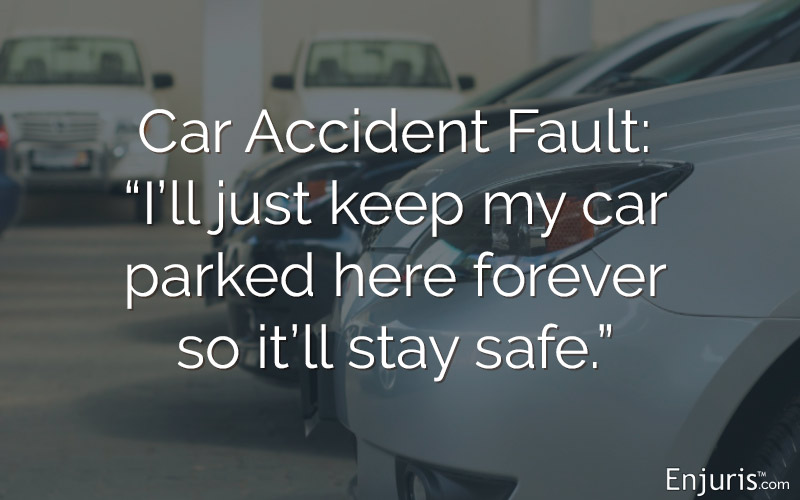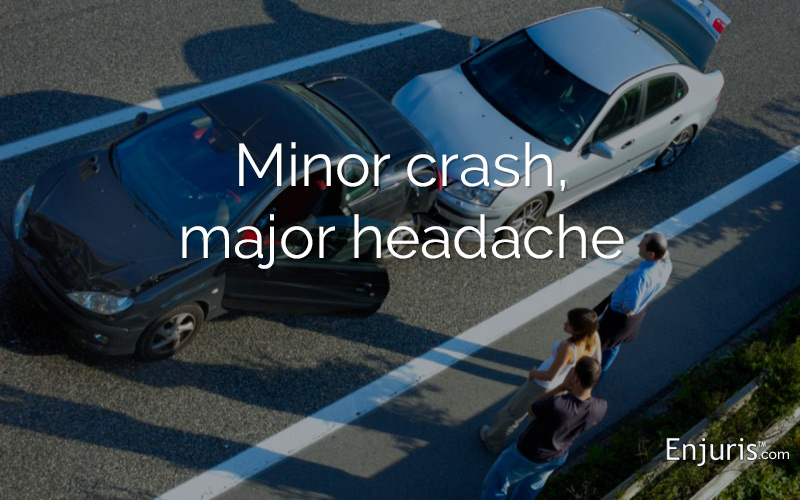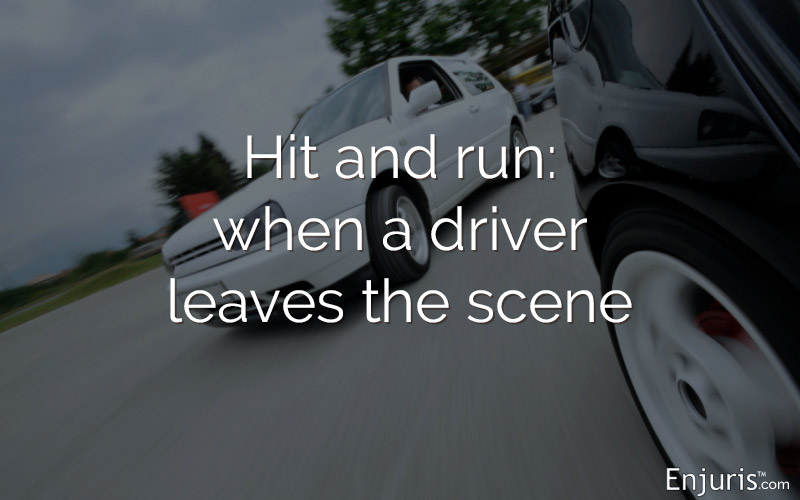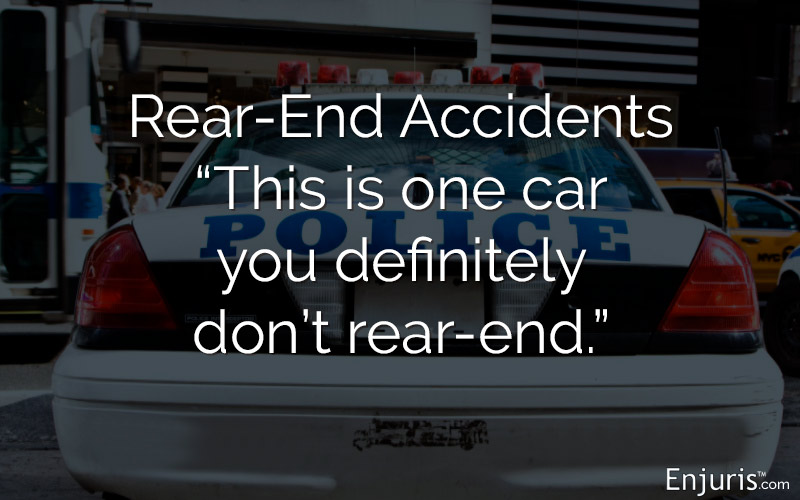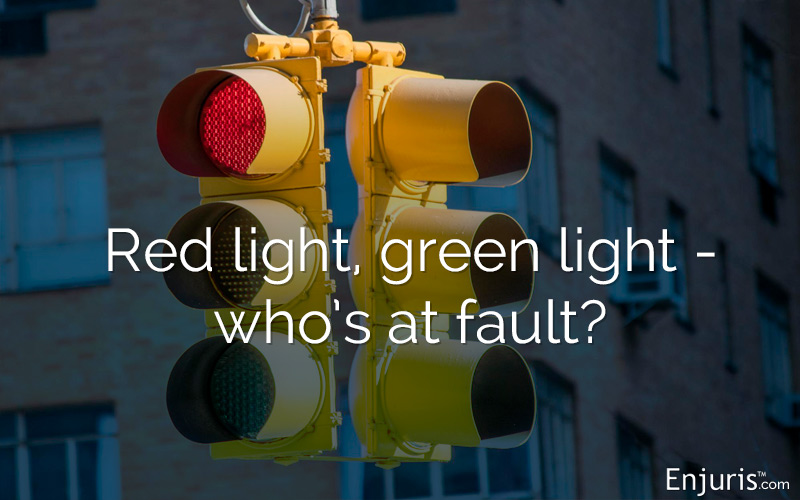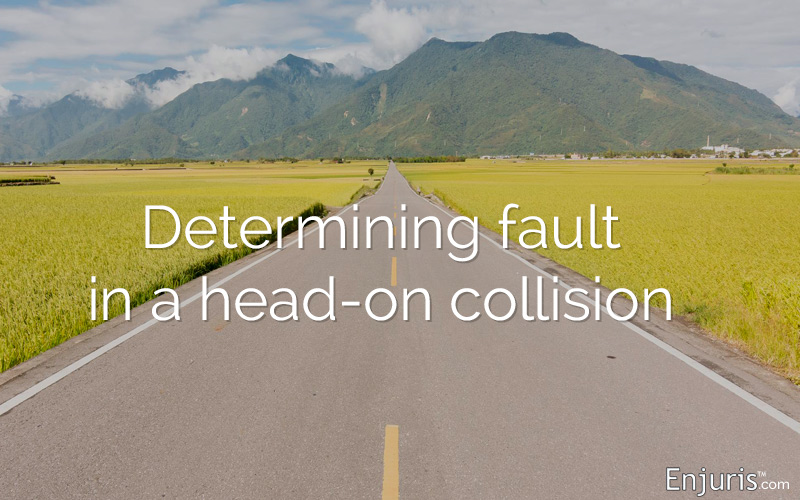What Connecticut personal injury laws mean for your car accident claim
Connecticut is the third-smallest state—after Rhode Island and Delaware—and measures about 5,500 square miles.
Connecticut, which is 70 miles wide and 110 miles long, has three primary highways: I-84, I-91 and I-95 are primary highways. You can drive the width of the state in a little over an hour and the length in about two hours.
Although you might be able to get to opposite ends of Connecticut pretty quickly, many residents likely spend the majority of their driving time on local roads within the state. While lots of Connecticut residents commute into New York City for work, plenty remain within the state for jobs and school.
And, with the population (about 3.6 million) highly mobile these days, it’s not a surprise that there are also car accidents... as there are everywhere. So, let’s take a look at Connecticut car accident statistics, car accident laws, and what you should do if you’re involved in a crash.
Connecticut car accident statistics
| Connecticut car accident fatalities in 2020 | |
|---|---|
| No. of vehicle miles traveled | 29,845 |
| No. of fatal crashes | 279 |
| No. of fatalities | 295 |
| No. of deaths per 100,000 people | 8.2 |
| No. of deaths per 100 million vehicle miles traveled | 0.99 |
| No. of deaths of car occupants | 113 (38%) |
| No. of deaths for pickup truck and SUV occupants | 54 (18%) |
| Single vehicle crash deaths | 169 (57%) |
| Multi-vehicle crash deaths | 126 (43%) |
| All crashes | 295 |
| Source: Insurance Institute of Highway Safety (IIHS.org) | |
Connecticut car accident laws
Connecticut is an at-fault state.
That means the person who causes an accident (the at-fault driver) must pay for the damages to everyone injured in the accident. The premise of personal injury law is that the plaintiff (the injured person) is entitled to be made whole, or to receive damages (money) from the defendant (the person who caused the injury) so they are in the same financial position they would be in if the accident hadn’t happened.
There are three ways to pursue damages if you’re injured in a Connecticut car accident:
- Make a claim against the at-fault party’s insurance for the amount of damages.
- Make a claim to your own insurance policy and your insurance company will pursue the at-fault driver’s insurance company through a process called subrogation.
- File a personal injury lawsuit against the at-fault driver.
A lawsuit should be your last resort if you can’t reach an acceptable settlement amount through insurance or if the value of damages is higher than the value of the at-fault driver’s policy limit.
Insurance would cover your medical expenses, lost wages and property loss. If there are other damages, like pain and suffering or mental anguish, you would need to file a lawsuit because these are not covered by insurance.
Connecticut modified comparative fault rule (51% Rule)
Connecticut law requires that the plaintiff is less than 51% at fault in order to recover any damages.
When an accident happens, the insurance companies (or the court) will look at fault as a percentage; it will assign a percentage of liability to each person. Even if you’re not the at-fault driver, there could be something you might have done differently to avoid the accident, and that would make you some percent liable.
Here’s an example:
Molly has just left the Torrington farmers’ market after picking up some fresh produce for dinner for her family. She’s driving west on Charles Street because she needs to drop off her daughter for an event at the Torringford Elementary School. Molly turns left into the school parking lot when Sam comes speeding east on Charles Street and he collides with Molly just as she is in the middle of her turn.
Molly made her turn cautiously. Sam was quite a distance away when she began to turn, and if he’d been driving at the posted speed limit, she would have more than enough time to complete her turn safely.
Because he was driving so fast, they crashed. Sam was at fault for the accident because he was speeding. But the insurance company determined that Molly was 15% at fault. If she had more accurately judged Sam’s speed and braked at the last second, she could have avoided an accident.
Sam was 85% liable for the crash and Molly was 15% liable. Under Connecticut law, Molly can still collect damages because she is less than 51% liable. The damage award would be reduced according to her percentage of fault.
Connecticut car accident statute of limitations
The statute of limitations is the amount of time you have to file a lawsuit. If you’re involved in a Connecticut car accident, you have two years from the date of the accident in which to file a lawsuit. If it’s later than that, the court will likely not hear your case.
It’s important to file a report with your insurance company immediately after the crash. A report is different from a claim; even if you think you might decide to pay or receive damages out of pocket, you should still make a report. If circumstances change and you decide not to pay or receive damages out of pocket, you might not be able to make a claim if you didn’t file a report within the insurance company’s required time period. For some insurers, this is just a couple of days.
In addition, Connecticut state law requires you to file a report within five days to the Connecticut Department of Motor Vehicles if the accident results in death, injury, or property damage worth more than $1,000.
Recovering damages after a car accident
Damages is the money you can receive for your injuries after a car accident. Damages fall into one of three categories: economic, non-economic and punitive.
Economic damages
As mentioned above, the objective of a personal injury lawsuit is to restore the plaintiff to the financial condition they would be in if the accident hadn’t happened.
You can recover funds for what the accident cost you. This includes medical treatment like a hospital stay, doctor’s visits, diagnostics like X-rays or MRIs, prescription medication, or other expenses related to the accident. An accident might leave you feeling annoyed or inconvenienced, but with economic damages you can only claim things that cost you money.
It also includes reimbursement of lost wages if your physical injuries leave you unable to return to work after the injury, and property loss for costs associated with your vehicle.
Non-economic damages
If your injuries were severe and resulted in pain and suffering or other emotional distress, you can receive additional compensation. Attorneys and courts have formulas that assign a financial value based on how the accident has affected your life, including emotional anguish. These are considered non-economic damages because they don’t have immediate financial value, but they can be calculated and included in a damage award.
Punitive damages
Punitive damages are intended to punish a defendant for especially egregious behavior. In Connecticut, the court can allow punitive damages if there is a reckless indifference to the rights of others or an intentional or wanton violation of their rights.

Damages worksheet to track expenses for your injury claim (medical treatment, property damage, lost wages, prescriptions)
Download in PDF format
10 most common causes of car accidents
- Distracted driving. Distracted driving is a serious problem. As people become increasingly dependent on cell phones for maps, podcasts, music, traffic reports, and other functions, there is a stronger pull to check their phones. But you should never, ever handle your phone or any electronic device while driving. Also, distraction can include eating, passenger behavior, personal grooming, or any other behavior that takes your mind, eyes or hands off driving.
- Drunk driving. You’re not allowed to drive if your blood alcohol content (BAC) is 0.08% or higher. Being under the influence of alcohol, drugs, or some medications can severely affect your driving and raises your risk of causing an accident.
- Aggressive driving. You’ve likely heard of “road rage,” which is when a person becomes so angry at another person that they might bully or physically harm someone on purpose because they’re annoyed. But there are other kinds of aggressive driving that don’t necessarily involve anger at a specific individual. Some drivers might be impatient and speed or swerve around cyclists or cars they think are going too slowly, make unsafe lane changes, or behave recklessly in some other way that could result in an accident.
- Speeding. Sometimes speeding is aggressive, and sometimes it is just carelessness. You might speed because you’re in a hurry or running late, but you shouldn’t. Speeding doesn’t get you to your destination any faster if you crash or get a ticket. And when you speed, you have less time to react to a traffic situation in front of you and less time to stop if necessary.
- Reckless driving. Similar to aggressive driving, reckless driving is any kind of action behind the wheel that’s unsafe. It might be speeding, weaving, dodging other cars, failure to stop at lights or stop signs, or any other number of reckless driving practices that break road rules or are unsafe.
- Inexperienced drivers. Your teenager might be the most responsible kid around, and they might care a lot about following road rules, driving at the correct speed, heeding stop lights and signs, and doing everything “right.” But younger drivers are inexperienced. That lack of experience could cause even the most careful driver to misjudge the speed of an oncoming car, poorly execute a turn, or make another mistake that results in an accident. And, some teenagers are more likely to take risks than an older driver would. Statistically, younger male drivers are most likely to make risky driving decisions.
- Tailgating. Tailgating is when a driver follows too closely behind the driver in front of them. Some tailgating is aggressive, but sometimes it happens because someone isn’t paying attention or simply doesn’t see the practice as dangerous. When traveling 55 mph, you should leave 16 car lengths (which is about 243 feet) between your vehicle and the car in front of you. Tailgating is dangerous because when you’re too close to another vehicle, you don’t have enough time to stop if you need to do so quickly. No car can stop on a dime, even if you react quickly. And, even if you stop very fast, there’s no guarantee that the driver behind you will be able to do so. As a result, tailgating can result in chain-reaction accidents.
- Weather conditions. Connecticut is no stranger to severe weather — ice, snow, wind, and other conditions are a regular part of our life. When the weather is extreme, it’s best to stay off the roads when you can. But when that’s not practical or realistic, exercise caution and drive slowly.
- Failure to obey traffic laws. Traffic laws are more than just stopping at red lights. Following the speed limit, staying in your lane, passing bicyclists safely, and yielding to pedestrians are just a few of the many necessary aspects to driving responsibly. Be familiar with the traffic laws in your local area and state, and obey them at all times to reduce your risk of a collision.
- Failure to stop at a red light or stop sign. Although stopping for stop signs and traffic lights are part of following traffic rules, they’re also among the ones drivers break most often. Even if you think you’re driving through a “quiet” intersection, you must stop completely at stop signs and lights.
What to do after a car accident in Connecticut
1. STOP. Connecticut law requires you to stop at the scene of any collision, no matter how minor. Failure to stop and provide your contact and insurance information at the scene can result in criminal hit-and-run charges. You can pull your car off the road and out of traffic if no one is seriously injured. Never attempt to move a seriously injured person.
2. Call 911. Connecticut law requires that you report any accident that results in death, injury or property damage worth more than $1,000. You have five days in which to make a report. Even if none of those has happened, it’s always a good idea to call the police when a collision occurs. A police report serves as valuable evidence that can be helpful to your insurance claim or lawsuit.
Even if you know or think you’re at fault, a police report can still help you. For instance, a plaintiff could try to claim that they were more injured than they actually were or that their car sustained more damage, but the police report will set forth the facts of the accident exactly as they’re assessed at the scene.
It’s important to cooperate with police officers, though you don’t need to make a statement of fault. You’re not required to make a statement about how the accident happened (and it’s probably best if you don’t), but you can and should provide factual information like your name, address, vehicle registration, and those types of answers when asked.
3. Seek medical attention. Even if you don’t feel injured, visit a doctor or hospital anyway as soon as possible following a collision. Some car accident injuries like whiplash and head injuries could have symptoms that don’t appear for days or weeks after the accident. If you don’t have an immediate medical assessment of your condition, it can be difficult to prove that a later injury is related to the accident.
4. Obtain witness information. In the moment, you don’t need to think about gathering witness statements. But it is important to be able to reach those people later. A well-meaning bystander might wait to make sure help has arrived or to see if everyone is okay and then leave the scene, figuring there’s no reason to stick around. But if anyone at the scene observed the accident — or the period leading up to it — they might have important, relevant information that can help with your case. Write down each person’s name, phone number, email address, and mailing address if possible.
You might also check to see if any surveillance cameras captured the crash on video. Many businesses and residences are equipped with cameras these days. If the accident happened somewhere that’s close to a business or home, you might be able to recover that footage. But be quick — most businesses will delete camera footage within a short time if they don’t think there’s a reason to save it. If you think there might be worthwhile information there, notify the business right away so the footage from that time period can be saved.
5. Take photos. Yes, a police report is important, but you’ve heard that a photo is worth a thousand words. If you’re not injured and are able to do so safely, take photos of the scene. Take pictures of the weather, any traffic signs or signals, the vehicles involved, other property damage, road markings, and anything else that might tell a story about how the accident happened and its aftermath. Don’t take photos of another person’s injuries, though, as this is an invasion of privacy (you may photograph your own injuries if you choose).
6. Call your insurance company. If you don’t make a report immediately, you could lose the option to file a claim in the future if you decide that you want to. Many insurance companies have strict time limits on when you need to report the accident, whether or not you intend to file a claim. You only need to give them the basic information about the accident in order for it to be reported.

Sample post-accident report form to keep in your glove box - fill out at the scene or as soon as you can after a car accident
Download in PDF format
The next step in recovering damages for your car accident is to call a Connecticut personal injury lawyer. Your lawyer will help you to receive the compensation you need and deserve after a crash.
Did you know that car accident law varies by state?
Hurt in a car crash? You may find these resources helpful
A personal injury lawyer helps individuals who have sustained injuries in accidents to recover financial compensation. These funds are often needed to pay for medical treatment, make up for lost wages and provide compensation for injuries suffered. Sometimes a case that seems simple at first may become more complicated. In these cases, consider hiring an experienced personal injury lawyer. Read moreNeed a lawyer?
What does an injury lawyer do?
Common car accidents
